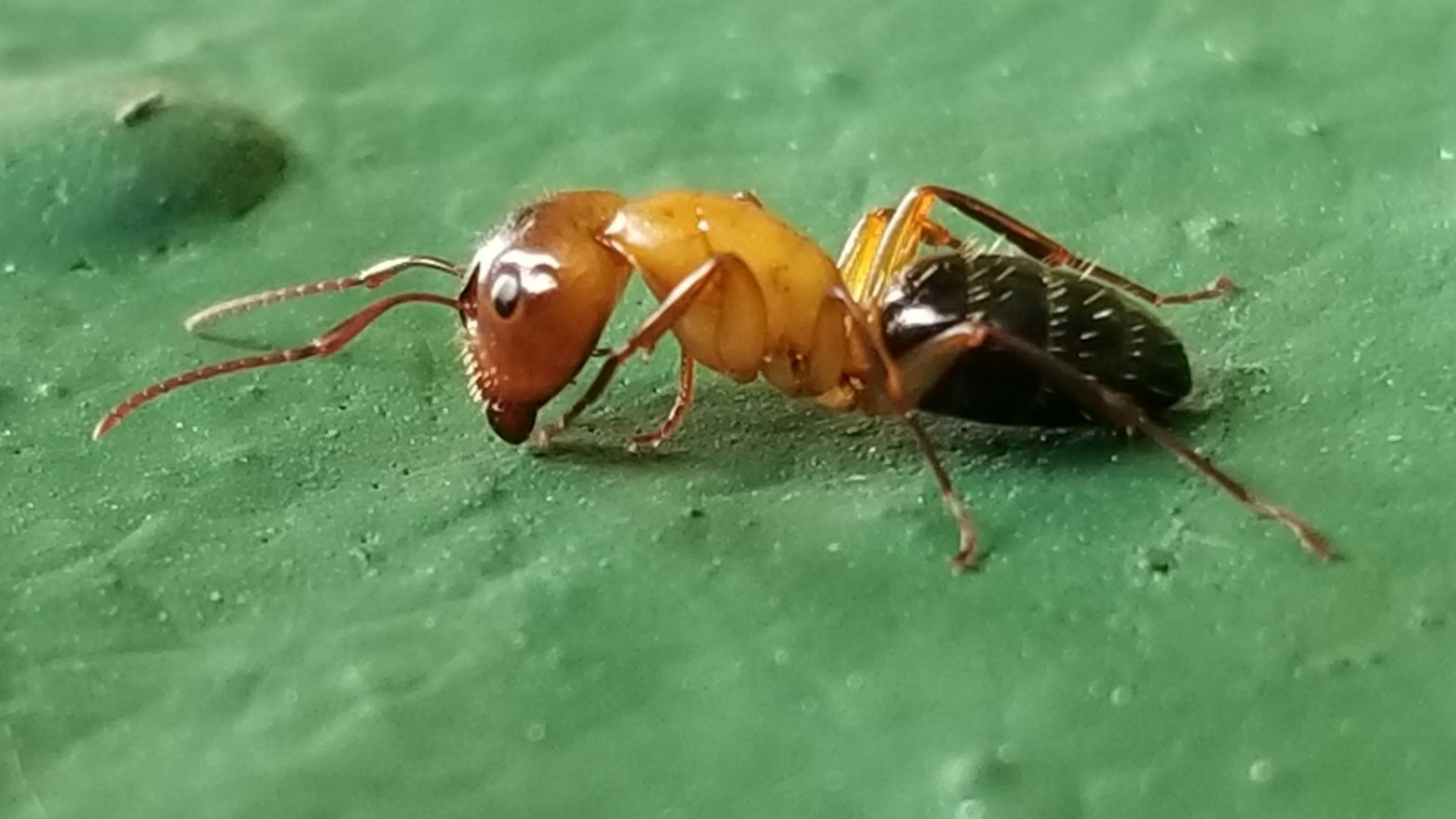
QUICK COURSE: "WHAT'S BUGGING YOU?" Carpenter Ants
Pennsylvania Carpenter Ant
- Most common large black ant in S.E. Wisconsin
- Have multiple sizes up to ½ inch long
- Smaller ¼ inch size referred to as “minor”
- Largest worker ant called “major”
- Multiple nest locations with satellite nest up to 300 feet from the main nest with the queen
- Main nest with Queen: prefers higher moisture, usually in water damaged wood such as rotten logs, railroad ties, old trees, water damaged overhangs or window and door sills. Secondary Sites can include under toilets, bathtubs, built-in dishwashers and any other confined locations where humidity may build up.
Areas where we receive the most calls for carpenter ants:
In the city of Kenosha: Allendale, Forest Park, Lincoln Park, Sunny Side, Downtown and Harbor Side District, Ken-Fair, Lake Front. White Caps as well as surrounding area.
In Plesant Prairie: Carol Beach, River Oaks, and Truesdell
Most of Kenosha counties communities have established carpenter ant problems. Bristol, Trevor, Salem, Wilmot, Wheatland, Twin Lakes, Paddock Lake, Camp Lake, Silver Lake, Lake Shangrila, Brighton, Paris, New Munster, and Powers Lake.
A closer look
- Activity between Queen Chamber and satellites can be seasonal, in cases of a new or smaller nest: visible activity may occur for only a few weeks per season. Most external activity will occur in the evening hours approximately one hour after sunset to one hour before sunrise.
- As colony matures, winged reproductive’ s are reared in the fall and released in the mid to late spring. Only Reproductive’s (alates)Female and Male , have wings and is the only time males(Drones) are present in the colony
- Reproductive swarmer's are only a sign that colony age is more than three years of age. This does not mean ants have been in structure entire time.
Most damage to the structure is restricted to water damaged areas. Only in rare cases will you find significant carpenter ant damage in sound wood.
Prevention of Carpenter AntsThe best way to control carpenter ants is to prevent their entry in the first place.
- Keep organic mulch at least 24 inches away from the structure. Aerate the mulch several times a season. Avoid depths of more than 2 inches. This will only encourage more insect pest getting into the structure and is bad for the health of plants and their root system.
- Trim all trees and shrubs away from the structure. Branches will create a bridge for carpenter ants to get past any protective barriers. Store firewood off the ground and away from the structure.
Repair all water leaks as soon as possible. Delays could damage/soften wood enough to attract ants even after a leak is repaired.
HOW WE GET ‘EM- We will first identify all points of entry and attractive conditions and make recommendations.
- Evaluate the severity of the problem and determine the best plan of attack.
Typical control measures are:- We use delayed reaction bait on inside nests. If no activity indoors? Bait is used on the exterior to help draw potential scouts outdoors. Delayed kill allows ants to introduce a sufficient amount of bait active ingredient to eliminate the entire indoor population of ants. Queen is usually outdoors, requiring through outdoor treatment of the structure.
- Apply an “invisible” fence around outside of the structure. Spectrum Pest Control only Uses a product that is non-repellent and slow acting.
- Many services still use a quick kill product that will trap ants inside the Structure and only kill the ants that come in contact to the product on the outside. This will do nothing to control the entire colony, and in many cases can Stress the colony to produce more queens during the “swarm” season. Only to make the problem worse long after the warranty has expired.
The delayed kill of our barrier will allow ants to live long enough to spread product to the rest of the colony.- The exterior barrier includes around foundation, doors, and windows as well as any utility connections and other points of entry.
- We return 2 weeks after initial to re-inspect and to treat with bait any areas with continued activity. We may also use bait outside to draw ants into barrier zone to speed up the elimination of the main colony.
Ask about our renewable one year warranty
Need help with Carpenter Ants?
Reach out to Spectrum regarding your questions about carpenter ants... we're happy to help!
